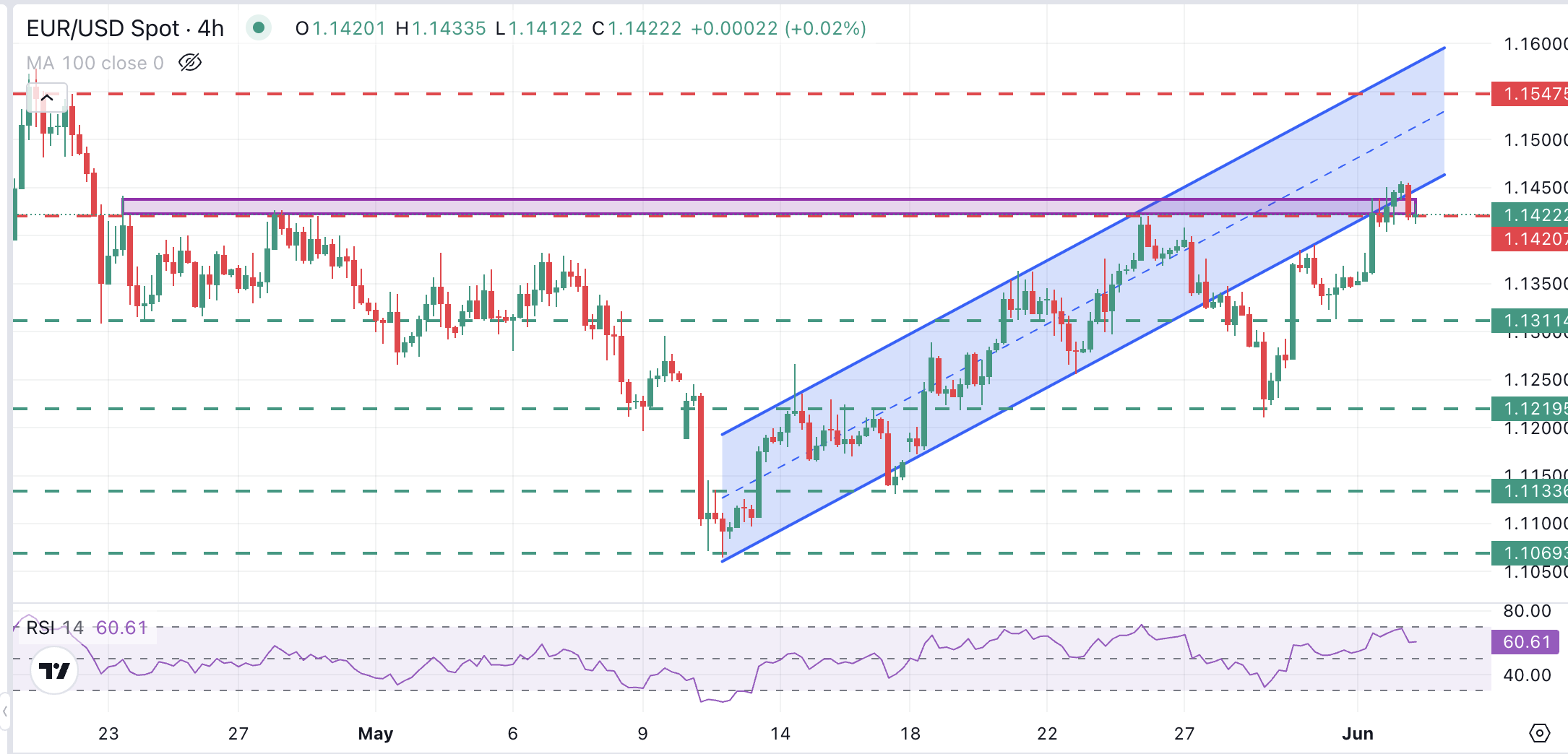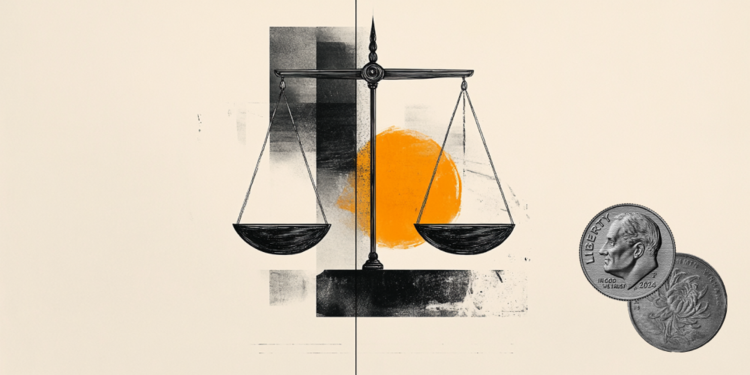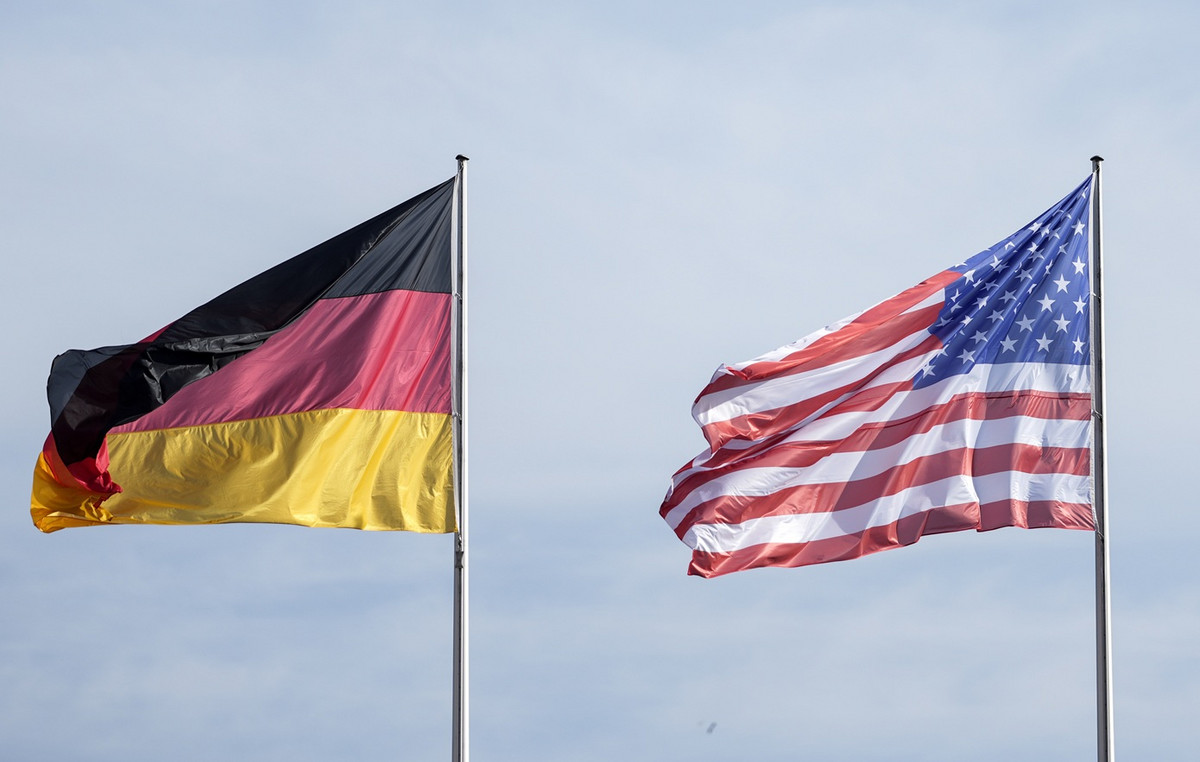- The EUR/USD cuts some profits before the publication of the Eurozone CPI.
- The US dollar is still unable to get away from the minimum of several weeks.
- The US manufacturing PMI confirmed the negative impact of tariffs on manufacturing activity.
The EUR/USD quotes with moderate losses, after strong performance the previous day. The torque moves around 1,1420 at the time of writing, with investors focused on preliminary numbers of the Eurozone consumer price index (CPI), which will be published later on Tuesday.
Consumer prices are expected to be cooled in May, with general inflation returning to a year -on -year growth rate (yoy) of 2%, from 2.2% recorded in April. Likewise, the underlying IPC is expected to be moderated to 2.5% from 2.7% in April.
These figures will probably be well received by the European Central Bank (ECB), which is expected to cut interest rates for eighth consecutive on Thursday. These numbers give a certain margin to the Central Bank to pause in July, but the president of the ECB, Christine Lagarde, will maintain her neutral tone, ensuring that future decisions will depend on the data.
The US dollar, on the other hand, still does not show a significant recovery. The chaotic commercial political of President Trump and the growing concerns about fiscal stability are acting as winds against the green ticket, and the recent US data failed to provide any relevant support.
Euro price today
The lower table shows the percentage of euro change (EUR) compared to the main currencies today. The euro was the strongest currency against the New Zealand dollar.
| USD | EUR | GBP | JPY | CAD | Aud | NZD | CHF | |
|---|---|---|---|---|---|---|---|---|
| USD | 0.22% | 0.14% | 0.03% | 0.12% | 0.55% | 0.55% | 0.05% | |
| EUR | -0.22% | -0.04% | -0.18% | -0.08% | 0.35% | 0.41% | -0.15% | |
| GBP | -0.14% | 0.04% | -0.12% | -0.04% | 0.40% | 0.45% | -0.10% | |
| JPY | -0.03% | 0.18% | 0.12% | 0.09% | 0.50% | 0.53% | 0.09% | |
| CAD | -0.12% | 0.08% | 0.04% | -0.09% | 0.38% | 0.49% | -0.06% | |
| Aud | -0.55% | -0.35% | -0.40% | -0.50% | -0.38% | 0.05% | -0.53% | |
| NZD | -0.55% | -0.41% | -0.45% | -0.53% | -0.49% | -0.05% | -0.55% | |
| CHF | -0.05% | 0.15% | 0.10% | -0.09% | 0.06% | 0.53% | 0.55% |
The heat map shows the percentage changes of the main currencies. The base currency is selected from the left column, while the contribution currency is selected in the upper row. For example, if you choose the euro of the left column and move along the horizontal line to the US dollar, the percentage change shown in the box will represent the EUR (base)/USD (quotation).
What moves the market today: the weakness of the US dollar keeps the downward attempts limited
- The euro keeps intact its broader positive trend, while the US dollar languishes about minimums of several weeks. The DXY dollar index fell below the psychological level of 100.00 last week, reaching new minimum of six weeks at 98.60 on Monday.
- The US manufacturing PMI was deteriorated in the expectations in May, with increasing delivery times, according to the ISM report. These figures have confirmed the negative impact of commercial uncertainty in the activity of the sector and have triggered fears of interruptions in the supply chain.
- The manufacturing PMI ISM of the US of May was contracted at a minimum of six months of 48.5 from 48.7 in the previous month, compared to market expectations of an increase to 49.5. The subscripts of new orders and employment increased slightly, while the prices paid decreased. The US dollar extended its losses after publication.
- In Europe, the manufacturing PMI of May confirmed the expected reading of 49.4, marking the fifth consecutive improvement in the data, although even at levels consisting of a slight contraction of the activity of the sector.
- The PMI of Germany was reviewed down to 48.3, from 48.8 estimated above, highlighting the soft impulse of the main economy of the region. However, the impact on the euro was moderate.
- The main attraction today in Europe will be the publication of the IPC data of the Eurozone, scheduled for 09:00 GMT, which is expected to show a decrease in pressures on prices and frame the decision of the ECB on Thursday.
- The US factory orders will be observed with special interest after the soft manufacturing figures seen Monday. The new orders are expected to have fallen month by month (MOM) in April 3%, after an increase of 3.4% in March. The risk to the USD is downward.
- Something later, US Jolts employment offers will open a series of publications on the labor market this week, which will culminate with the important non -agricultural payrolls of the United States on Friday. Employment offers are expected to remain stable at 7.1 million in April.
Technical Analysis: The EUR/USD bulls are limited below the resistance area of 1,1450
The EUR/USD reached six weeks in 1,1450 on Monday, but failed to consolidate over the resistance area between 1,1415 and 1,1435, which has kept bulls at bulls since mid -April.
However, the pair maintains intact its positive trend, since the widespread weakness of the US dollar keeps bassists at bay for now. The immediate resistance is now in the reverse trend line of 1,1450, which closes the road to the maximum of April 22, in 1,1545.
Not breaking 1,1450, on the contrary, could put the minimum of May 30 in 1,1310 at stake again, before the 1220 support area.
4 hours EUR/USD

FAQS inflation
Inflation measures the rise in prices of a representative basket of goods and services. General inflation is often expressed as an intermennsual and interannual percentage variation. The underlying inflation excludes more volatile elements, such as food and fuel, which can fluctuate due to geopolitical and seasonal factors. The underlying inflation is the figure on which economists focus and is the objective level of central banks, which have the mandate of maintaining inflation at a manageable level, usually around 2%.
The consumer price index (CPI) measures the variation in the prices of a basket of goods and services over a period of time. It is usually expressed as an intermennsual and interannual variation. The underlying IPC is the objective of the central banks, since it excludes the volatility of food and fuels. When the underlying IPC exceeds 2%, interest rates usually rise, and vice versa when it falls below 2%. Since higher interest rates are positive for a currency, higher inflation usually translates into a stronger currency. The opposite occurs when inflation falls.
Although it may seem contrary to intuition, high inflation in a country highlights the value of its currency and vice versa in the case of lower inflation. This is because the Central Bank will normally raise interest rates to combat the greatest inflation, which attracts more world capital tickets of investors looking for a lucrative place to park their money.
Formerly, gold was the asset that investors resorted to high inflation because it preserved their value, and although investors often continue to buy gold due to their refuge properties in times of extreme agitation in the markets, this is not the case most of the time. This is because when inflation is high, central banks upload interest rates to combat it. Higher interest rates are negative for gold because they increase the opportunity cost to keep gold in front of an asset that earns interest or place money in a cash deposit account. On the contrary, lower inflation tends to be positive for gold, since it reduces interest rates, making bright metal a more viable investment alternative.
Source: Fx Street
I am Joshua Winder, a senior-level journalist and editor at World Stock Market. I specialize in covering news related to the stock market and economic trends. With more than 8 years of experience in this field, I have become an expert in financial reporting.





